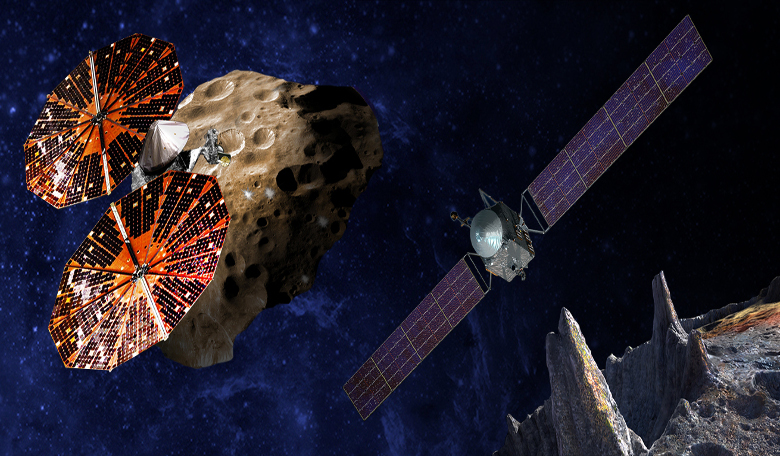NASA has given the go-ahead for three new missions, two to explore the early solar system and another to study energetic X-rays emitted from black holes.
The two key planetary missions, Lucy and Psyche were selected from five potential projects that included studying gases on Venus and a Near Earth Object camera. However it was plans to study an era less than 10 million years after the birth of the Sun that made the final cut. Lucy, a robotic spacecraft, is scheduled to launch in October 2021 and will visit a target-rich environment of Jupiter’s mysterious Trojan asteroids. The Trojans, currently trapped by Jupiter’s gravity, may have initially formed far from beyond the gas giants current orbit and by studying six of these objects from 2027 to 2033, Lucy will hopefully shed light on a much earlier period in the history of the solar system.
“This is a unique opportunity,” said Harold F. Levison, principal investigator of the Lucy mission from the Southwest Research Institute in Boulder, Colorado. “Because the Trojans are remnants of the primordial material that formed the outer planets, they hold vital clues to deciphering the history of the solar system. Lucy, like the human fossil for which it is named, will revolutionize the understanding of our origins.”
Psyche on the other hand will study a unique metal asteroid that’s never been visited before – 16 Psyche – and it is due for launch in 2023. “This is what Discovery Program missions are all about – boldly going to places we’ve never been, to enable groundbreaking science,” said Thomas Zurbuchen, associate administrator for NASA’s Science Mission Directorate in Washington.
Visiting 16 Psyche will give scientists the opportunity to explore a new type of world, not one of rock or ice, but of metal thus allowing a greater understanding of how planets and other bodies separated into their layers – including cores, mantles and crusts – early in their histories.
“16 Psyche is the only known object of its kind in the solar system, and this is the only way humans will ever visit a core. We learn about inner space by visiting outer space,” said Psyche Principal Investigator Lindy Elkins-Tanton of Arizona State University in Tempe.
Last but not least is the Imaging X-ray Polarimetry Explorer (IXPE) mission. Slated to launch in 2020 at a cost of $188 million, IXPE will look at the turbulent and extreme environments of phenomena such as stellar and supermassive black holes, neutron stars and pulsars.
The one thing these objects have in common is an abundance of high energy X-ray radiation and clues to the gravitational, electric and magnetic fields generated by these phenomena can be gleaned from the polarisation of the X-rays they emit. Polarised waves are waves in which the vibrations occur in a single plane as opposed to unpolarised light which vibrates in more than one plane.
“We cannot directly image what’s going on near objects like black holes and neutron stars, but studying the polarization of X-rays emitted from their surrounding environments reveals the physics of these enigmatic objects,” said Paul Hertz, astrophysics division director for the Science Mission Directorate at NASA Headquarters in Washington. “NASA has a great history of launching observatories in the Astrophysics Explorers Program with new and unique observational capabilities. IXPE will open a new window on the universe for astronomers to peer through. Today, we can only guess what we will find.”











